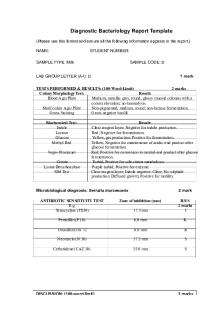Action Theory 20 Mark Question Plan PDF

| Title | Action Theory 20 Mark Question Plan |
|---|---|
| Course | Urban Sociology |
| Institution | University of Manchester |
| Pages | 2 |
| File Size | 46 KB |
| File Type | |
| Total Downloads | 33 |
| Total Views | 165 |
Summary
jyyyyyyyyyyyyyyyyyy...
Description
Applying material from Item A and your own knowledge, evaluate the contribution of action approaches to our understanding of social behaviours – Plan (20 Marks) Introduction Social Action theory is a micro perspective, focusing on the meanings attached to the social world by small groups of individuals, taking an interpretative methodological approach, which includes methods such as the labelling theory.
Paragraph 1 P. Symbolic Interactionism E. Cooley - That there is a looking glass self. E. Whereby we see ourselves as others see us by taking the other persons role in social interactions and so we become what we think others perceive us as. L. Recognises that people are complex and active and have their own diverse meanings and motives for acting. C. It tends to ignore power-distribution in society – it can’t explain patterns in class, gender, ethnicity.
Paragraph 2 P. Goffman’s Dramaturgical Theory - We are able to manipulate how others see us and we are constantly evaluating our own performance, like those of actors in a play. E. When we act in the social world, we put on a ‘front’ in order to project a certain image of ourselves (our ‘social identity’). E. We must be constantly on our guard to practice ‘expressive control’ when on the social stage. L. In-depth research methods associated with social action theory often have high validity.
C. Though that there is a role difference between our free will and our construct of the role we take, for example teachers are perceived as strict but may in fact be laid back.
Paragraph 3 P. Labelling Theory E. Becker developed labelling theory by examining deviancy, claiming that an act is only perceived as deviant once it has been labelled as such. E. Whether an act will become labelled as deviant depends greatly on the role of social actors and their reactions to an act, particularly the actions of those with the power to define an act as deviant. L. Labelling Theory recognizes the importance of micro-level interactions in shaping people’s identities, and the fact that people in power are often more able to ‘define the situation’. C. Labelling theory can also be criticised for being deterministic.
Paragraph 4 P. Observation alone is not enough to understand human action, we need empathetic understanding. E. Weber still attempted to make generalisations about types of motive for action – there are four main types of motive for action – E. Instrumentally rational, value rational, traditional action and affectual action. L. Society still affects individual motives, but in a general way. C. It doesn’t pay sufficient attention to how social structures constrain action.
Conclusion Allows researchers to adopt methods that seek to understand the individual and closely examine that individual’s relationship to the power structures in society....
Similar Free PDFs

ACTION PLAN-FEEDING
- 2 Pages

ACTION PLAN IN ENGLISH
- 4 Pages

ACTION PLAN IN SCIENCE
- 4 Pages

SCIENCE CLUB Action Plan
- 3 Pages

MATH- Action PLAN
- 4 Pages

Career Action Plan
- 3 Pages

Action Plan Assignment
- 4 Pages

4.Theory 3 social action
- 9 Pages

Final Action PLAN
- 5 Pages

Action Plan- Inventory
- 2 Pages

Action Plan 4 - Skylar
- 1 Pages

Diagnostic Report - mark - 19/20
- 2 Pages

Max Weber: social action theory
- 4 Pages
Popular Institutions
- Tinajero National High School - Annex
- Politeknik Caltex Riau
- Yokohama City University
- SGT University
- University of Al-Qadisiyah
- Divine Word College of Vigan
- Techniek College Rotterdam
- Universidade de Santiago
- Universiti Teknologi MARA Cawangan Johor Kampus Pasir Gudang
- Poltekkes Kemenkes Yogyakarta
- Baguio City National High School
- Colegio san marcos
- preparatoria uno
- Centro de Bachillerato Tecnológico Industrial y de Servicios No. 107
- Dalian Maritime University
- Quang Trung Secondary School
- Colegio Tecnológico en Informática
- Corporación Regional de Educación Superior
- Grupo CEDVA
- Dar Al Uloom University
- Centro de Estudios Preuniversitarios de la Universidad Nacional de Ingeniería
- 上智大学
- Aakash International School, Nuna Majara
- San Felipe Neri Catholic School
- Kang Chiao International School - New Taipei City
- Misamis Occidental National High School
- Institución Educativa Escuela Normal Juan Ladrilleros
- Kolehiyo ng Pantukan
- Batanes State College
- Instituto Continental
- Sekolah Menengah Kejuruan Kesehatan Kaltara (Tarakan)
- Colegio de La Inmaculada Concepcion - Cebu


